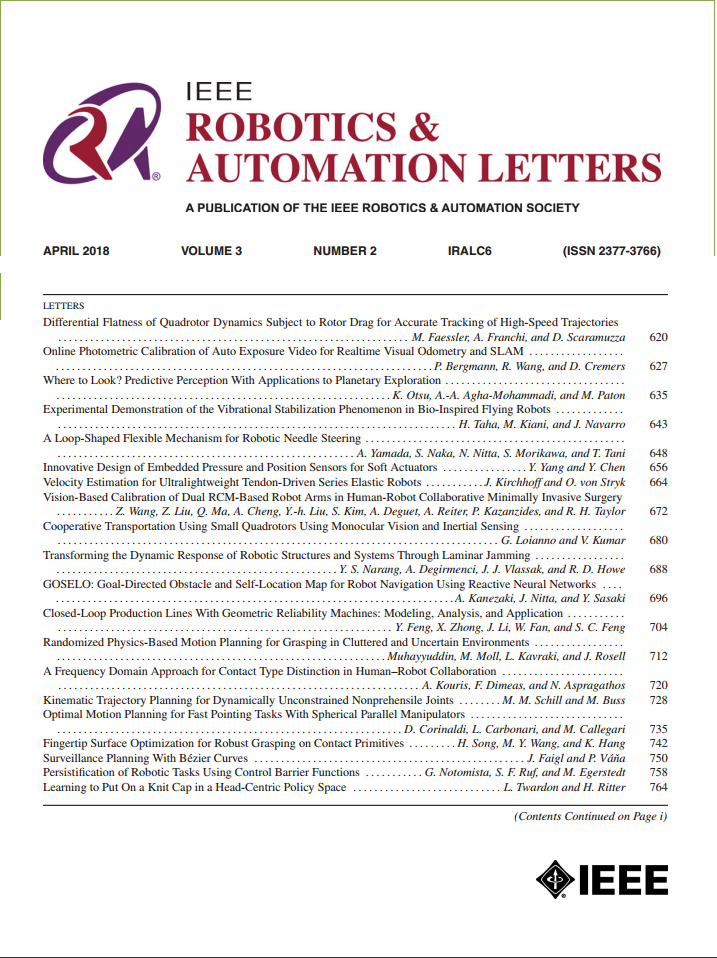基于凸集的有界机械臂轨迹规划方法
IF 4.6
2区 计算机科学
Q2 ROBOTICS
引用次数: 0
摘要
在线轨迹规划使机器人操纵器能够快速响应变化的环境或任务。许多机器人轨迹规划存在于已知环境中,但对于在线计算来说往往太慢。当前的在线轨迹规划方法不能在尊重机器人极限和考虑碰撞的挑战性场景中找到合适的轨迹。这项工作提出了一个轨迹规划框架,包括基于凸集的新型笛卡尔路径规划器BoundPlanner和在线轨迹规划器BoundMPC [Oelerich, et al.(2025)]。BoundPlanner使用凸集探索和映射无碰撞空间,以计算带边界的参考路径。在这项工作中,将BoundMPC扩展到处理路径偏差的凸集,这使得机器人能够在考虑机器人运动学的情况下最优地遵循边界内的路径。采用一种新颖的基于凸集的避碰公式来考虑机器人运动链的碰撞,该避碰公式与障碍物数量无关。以7自由度机械臂为例进行的仿真和实验表明,与现有方法相比,所提出的规划器具有良好的性能。本文章由计算机程序翻译,如有差异,请以英文原文为准。
BoundPlanner: A Convex-Set-Based Approach to Bounded Manipulator Trajectory Planning
Online trajectory planning enables robot manipulators to react quickly to changing environments or tasks.Many robot trajectory planners exist for known environments but are often too slow for online computations. Current methods in online trajectory planning do not find suitable trajectories in challenging scenarios that respect the limits of the robot and account for collisions. This work proposes a trajectory planning framework consisting of the novel Cartesian path planner based on convex sets, called BoundPlanner, and the online trajectory planner BoundMPC [Oelerich, et al. (2025)]. BoundPlanner explores and maps the collision-free space using convex sets to compute a reference path with bounds. BoundMPC is extended in this work to handle convex sets for path deviations, which allows the robot to optimally follow the path within the bounds while accounting for the robot's kinematics. Collisions of the robot's kinematic chain are considered by a novel convex-set-based collision avoidance formulation independent on the number of obstacles. Simulations and experiments with a 7-DoF manipulator show the performance of the proposed planner compared to state-of-the-art methods.
求助全文
通过发布文献求助,成功后即可免费获取论文全文。
去求助
来源期刊

IEEE Robotics and Automation Letters
Computer Science-Computer Science Applications
CiteScore
9.60
自引率
15.40%
发文量
1428
期刊介绍:
The scope of this journal is to publish peer-reviewed articles that provide a timely and concise account of innovative research ideas and application results, reporting significant theoretical findings and application case studies in areas of robotics and automation.
 求助内容:
求助内容: 应助结果提醒方式:
应助结果提醒方式:


